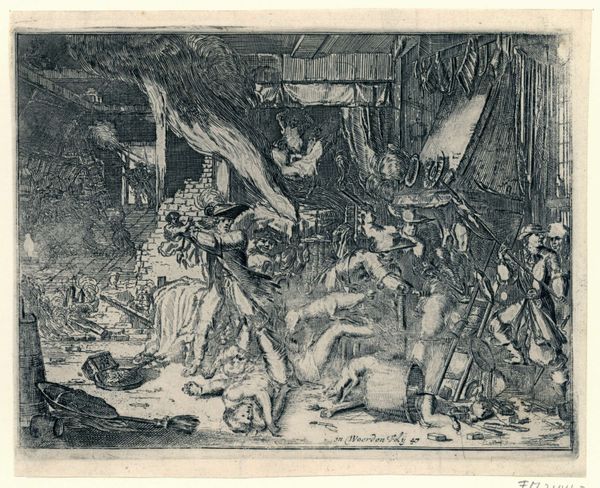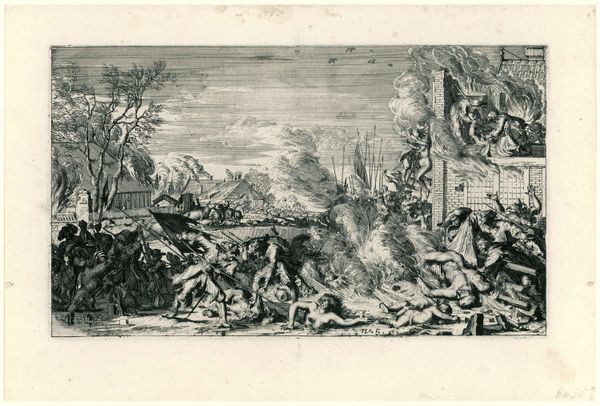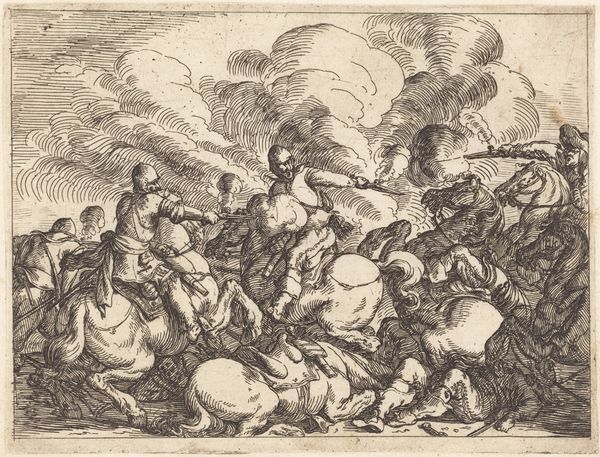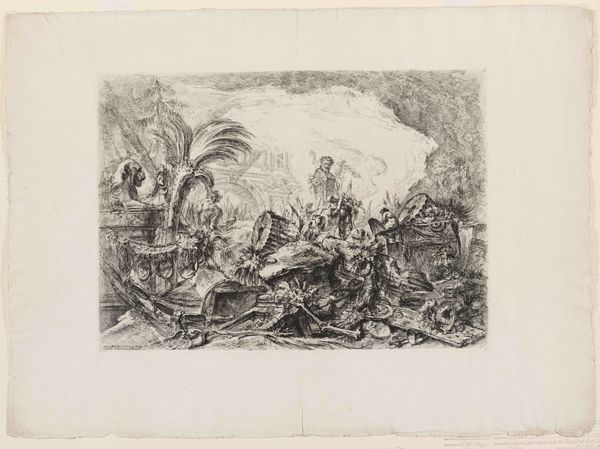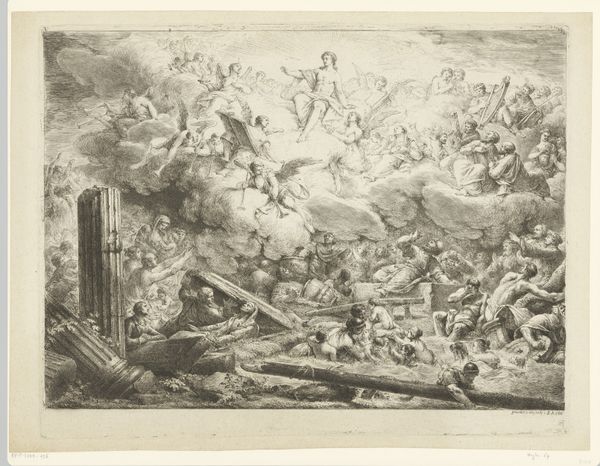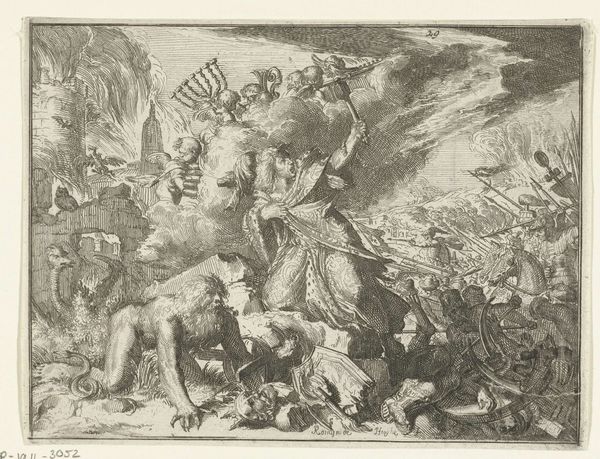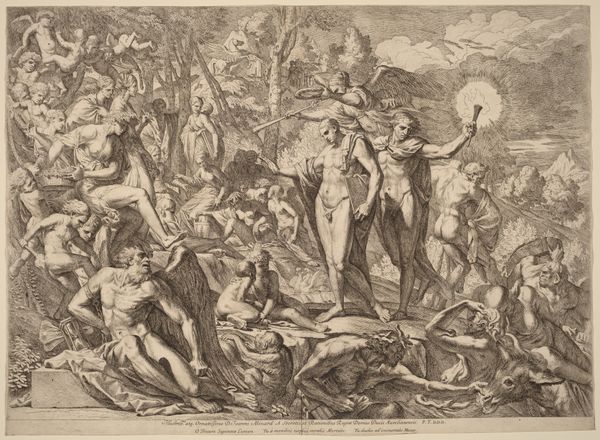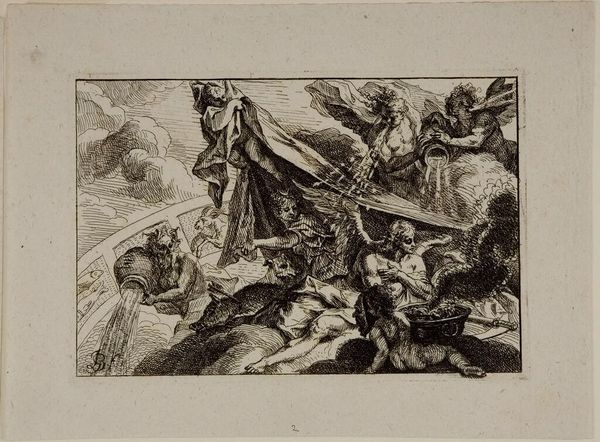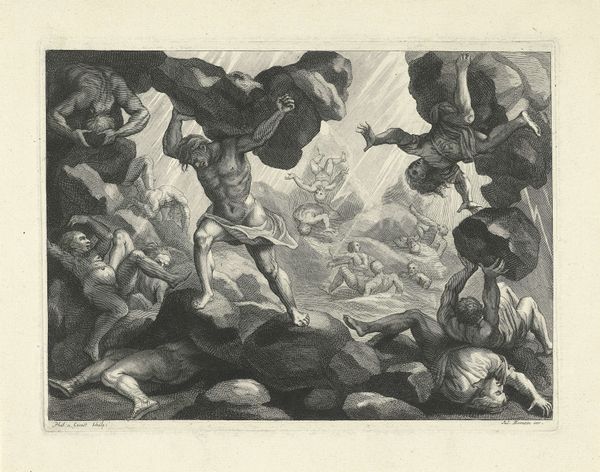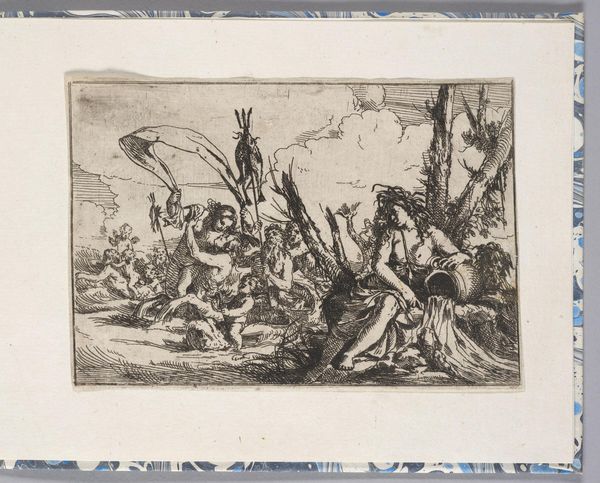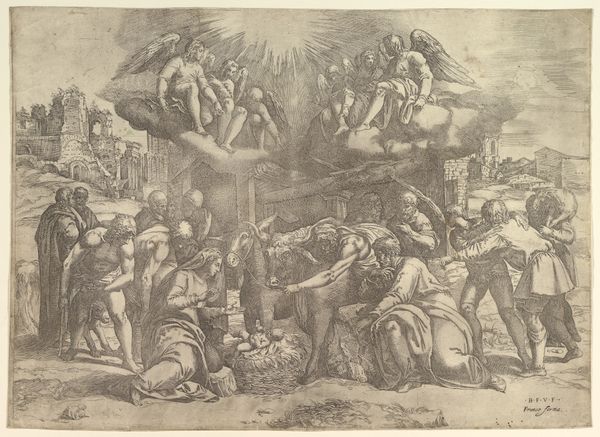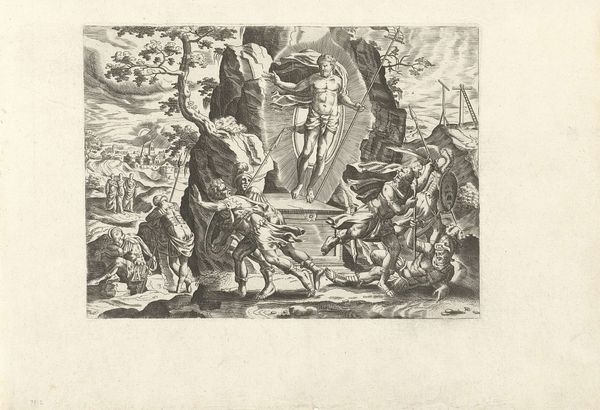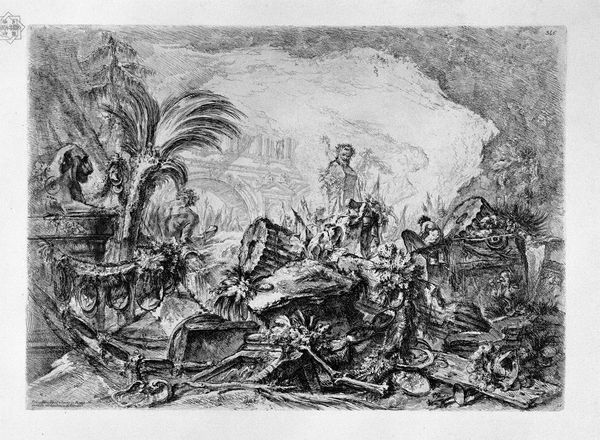
print, etching
#
allegory
#
narrative-art
#
baroque
# print
#
etching
#
history-painting
Dimensions: height 232 mm, width 347 mm
Copyright: Rijks Museum: Open Domain
Editor: This is "Oorlog en tirannie teisteren Nederland," or "War and Tyranny Devastating the Netherlands," a 1674 etching by Romeyn de Hooghe, at the Rijksmuseum. It's… intense. The sheer chaos is overwhelming, all that fire and struggling bodies. What exactly am I looking at here? Curator: You’re looking at a carefully constructed political statement, reflecting the anxieties of a nation under pressure. De Hooghe uses allegory to comment on the Franco-Dutch War. Look at the central figure riding the lion – does it remind you of anything? Editor: It looks like… Louis XIV? But more like a god of war? Curator: Precisely! By depicting the French king in this way, De Hooghe isn't just showing a military conflict, but rather indicting Louis XIV's hubris. Consider the perspective of ordinary Dutch citizens at the time, constantly facing invasion. What symbols speak to the impact on their lives? Editor: The fallen people, the burning towns in the background... it’s less about glorious battle and more about suffering. The etching is communicating the very real social disruption. Curator: Exactly. And think about the choice of etching – a medium accessible to a wide audience. De Hooghe is deliberately disseminating a critical perspective. What kind of impact could images like these have in shaping public opinion and resistance during a war? Editor: So, this isn’t just a historical record. It’s a call to action. It humanizes the victims of war and also serves as political propaganda. I see that the figures and staging serve a precise purpose beyond being aesthetically beautiful. It’s interesting how De Hooghe situates this event within a broader commentary on power and accountability. Curator: Indeed, viewing this image invites us to question who benefits and who suffers during war and oppression, even today.
Comments
No comments
Be the first to comment and join the conversation on the ultimate creative platform.
